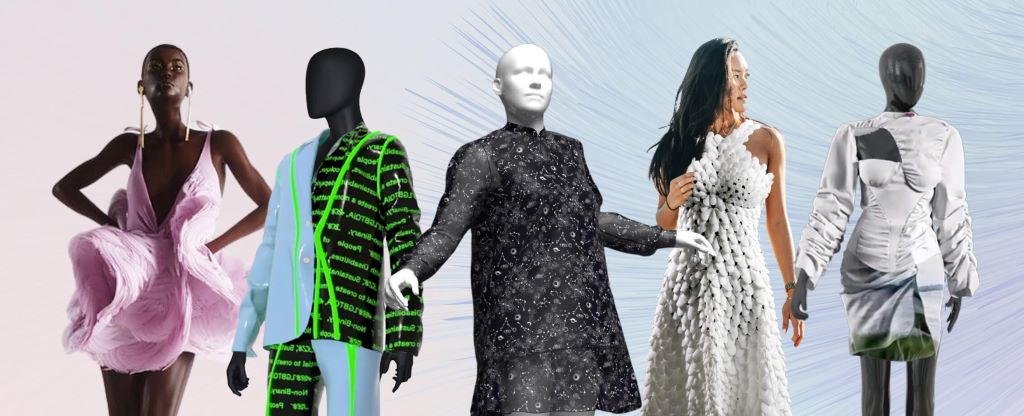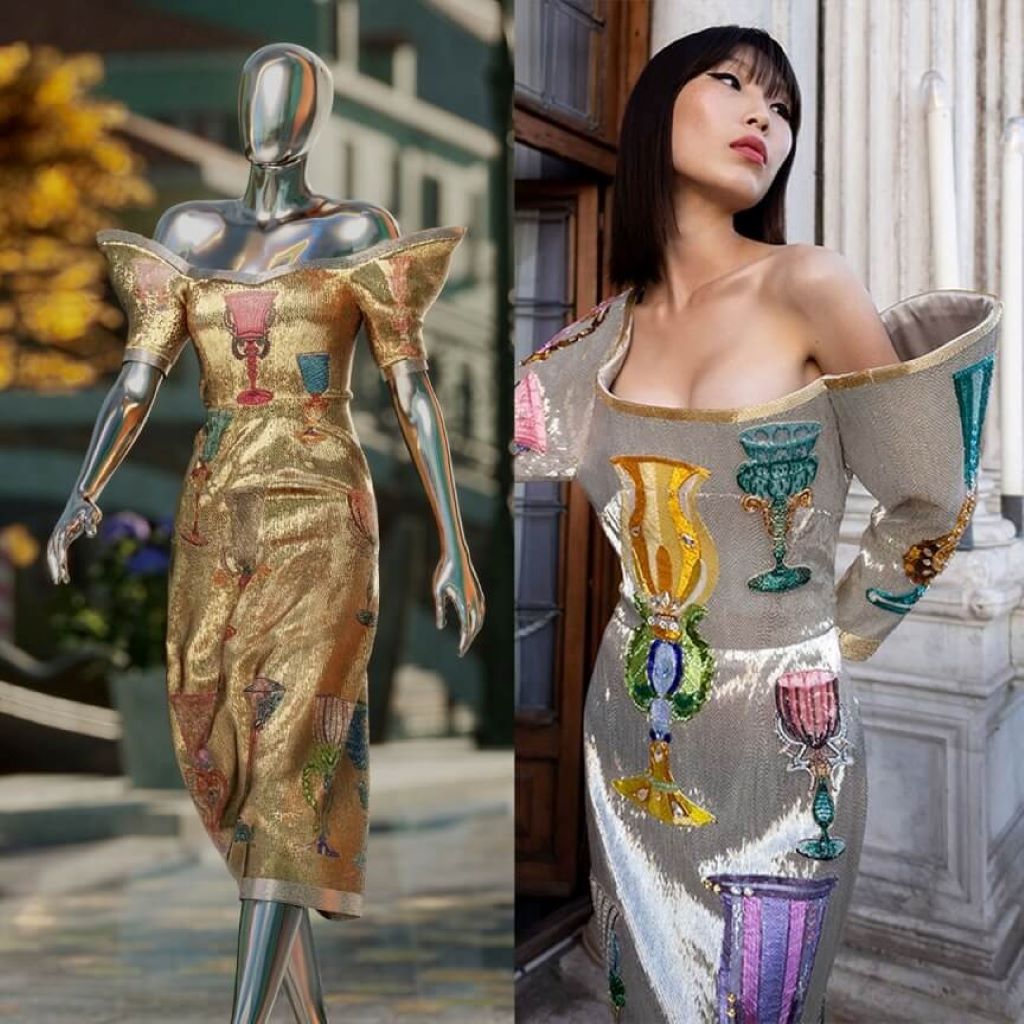
The metaverse has revolutionized how we express ourselves digitally. Virtual worlds now offer endless possibilities for avatar customization. Custom NFT outfits have emerged as the new frontier of digital fashion. These unique digital garments allow users to showcase their personality in virtual spaces. Platforms like Dress 24h are leading this transformation by creating innovative digital fashion solutions.
Digital fashion represents more than just virtual clothing. It combines art, technology, and personal expression. Users can now own exclusive outfits that exist only in digital form. These garments carry real value through blockchain technology. Additionally, they provide social status within virtual communities.
The rise of nft wearables in metaverse environments has created new economic opportunities. Designers can monetize their creativity without physical production costs. Furthermore, collectors can invest in rare digital fashion pieces. This shift has attracted major fashion brands to explore virtual clothing lines.
Understanding NFT Fashion in Virtual Worlds
NFT fashion operates differently from traditional clothing. Each piece exists as a unique digital token on the blockchain. This technology ensures authenticity and ownership verification. Therefore, users can prove they own specific virtual garments.
Virtual clothing serves multiple purposes in metaverse environments. First, it allows for unlimited creativity without physical constraints. Designers can create impossible materials and gravity-defying structures. Second, digital outfits never wear out or become damaged. However, their value can fluctuate based on market demand.
The production process for NFT outfits involves specialized software and skills. Designers use 3D modeling programs to create detailed garments. Additionally, they must understand avatar compatibility across different platforms. This technical knowledge separates professional creators from casual designers.
Popular Metaverse Platforms for Digital Fashion
Several major platforms support custom NFT outfits. Decentraland offers extensive avatar customization options. Users can purchase land and create fashion shows within this virtual world. Similarly, The Sandbox provides tools for designing unique wearable items.
Roblox has become a significant player in virtual fashion. The platform allows users to create and sell clothing items. Moreover, major brands have established virtual stores within Roblox. These partnerships demonstrate the growing commercial potential of digital fashion.
VRChat focuses on social interaction through customizable avatars. Users can upload completely custom models and outfits. However, this freedom requires more technical expertise than other platforms. Therefore, many users rely on commissioned designers for unique looks.
Creating Unique Avatar Styles
Successful avatar styling requires understanding color theory and design principles. Cohesive outfits consider skin tone, body type, and personal preferences. Additionally, the virtual environment influences appropriate clothing choices. Formal events may require elegant digital attire.
Mixing different NFT pieces creates distinctive looks. Users can combine items from various designers and collections. Furthermore, layering accessories adds depth and personality to avatars. This approach allows for endless customization possibilities.
Seasonal trends influence virtual fashion just like physical clothing. Holiday-themed outfits become popular during specific times. According to Fortune, luxury brands are increasingly investing in virtual fashion initiatives. This trend suggests continued growth in the digital fashion market.
Economic Benefits of Digital Fashion
NFT wearables offer several financial advantages over physical clothing. Storage costs become irrelevant with digital garments. Additionally, shipping and manufacturing expenses disappear entirely. This efficiency allows designers to focus purely on creativity.
The secondary market for NFT fashion continues expanding. Rare pieces can appreciate significantly in value over time. However, market volatility affects all digital assets. Therefore, buyers should research thoroughly before making investments.
Revenue sharing models benefit both creators and platforms. Designers receive royalties from secondary sales permanently. Moreover, platforms take small transaction fees for facilitating trades. This system encourages continued innovation and quality improvement.

Technical Aspects of NFT Wearables
Blockchain technology underpins all NFT transactions. Ethereum remains the most popular network for digital fashion. However, alternative chains offer lower transaction fees. Polygon and Binance Smart Chain provide cost-effective options for smaller purchases.
Smart contracts govern NFT ownership and transfer rules. These programs execute automatically when conditions are met. Additionally, they can include special features like animated elements. However, complex smart contracts require more gas fees to deploy.
Interoperability between platforms remains a significant challenge. Different metaverse environments use varying avatar standards. Therefore, an outfit from one platform may not work elsewhere. Industry leaders are working toward universal compatibility solutions.
Future Trends in Virtual Fashion
Artificial intelligence will likely reshape digital fashion design. AI tools can generate unique patterns and textures automatically. Furthermore, machine learning algorithms can predict trending styles. This technology will democratize fashion creation for non-designers.
Augmented reality integration promises exciting possibilities. Users may soon wear NFT outfits in real-world social media posts. Additionally, AR mirrors could display virtual clothing on physical bodies. These innovations would bridge the gap between digital and physical fashion.
Sustainability concerns are driving virtual fashion adoption. Digital clothing produces no textile waste or pollution. Moreover, it eliminates the need for fast fashion consumption. Environmental consciousness may accelerate mainstream acceptance of NFT wearables.
Getting Started with NFT Fashion
New users should begin by exploring free avatar customization options. Most platforms offer basic clothing items without cost. This exploration helps users understand their style preferences. Additionally, it provides familiarity with platform interfaces and features.
Research is essential before purchasing expensive NFT outfits. Check the creator’s reputation and previous work quality. Furthermore, verify the item’s compatibility with preferred platforms. Reading community reviews provides valuable insights about specific collections.
Wallet security becomes crucial when dealing with valuable NFTs. Hardware wallets offer maximum protection for digital assets. Additionally, users should never share private keys or seed phrases. Regular security audits help identify potential vulnerabilities before problems occur.
Conclusion
Custom NFT outfits are transforming digital self-expression in metaverse environments. These unique virtual garments combine artistic creativity with blockchain technology. The growing market offers opportunities for designers, collectors, and casual users alike.
The future of digital fashion looks increasingly bright. Major brands are investing heavily in virtual clothing lines. Additionally, technological improvements continue expanding creative possibilities. However, users should approach NFT purchases with careful consideration and research.
Virtual fashion represents just the beginning of our digital transformation. As metaverse adoption grows, custom NFT outfits will become increasingly important. These digital assets allow for unprecedented personal expression in virtual worlds.
Frequently Asked Questions
Q: How much do custom NFT outfits typically cost? A: Prices vary widely based on rarity and creator reputation. Basic items may cost $10-50, while exclusive pieces can reach thousands of dollars. Market demand heavily influences pricing.
Q: Can I wear my NFT outfit across different metaverse platforms? A: Currently, most NFT outfits work only on specific platforms. However, some companies are developing cross-platform compatibility solutions. Always check compatibility before purchasing.
Q: Do I really own my NFT outfit, or just a license to use it? A: NFT ownership grants you the token and associated rights as defined by the smart contract. However, copyright and usage rights vary by creator. Read terms carefully before buying.
Q: How do I know if an NFT outfit is authentic and not a copy? A: Verify the creator’s official account and check the NFT’s blockchain history. Official marketplaces usually verify creators. Be cautious of suspiciously low prices for popular items.
Q: Can I resell my NFT outfits if I no longer want them? A: Yes, most NFT marketplaces allow reselling. However, you’ll typically pay transaction fees and platform commissions. Market demand determines whether you’ll profit from the sale.
Read More:
Couture Meets Circuitry: The Convergence of Fashion and Technology
